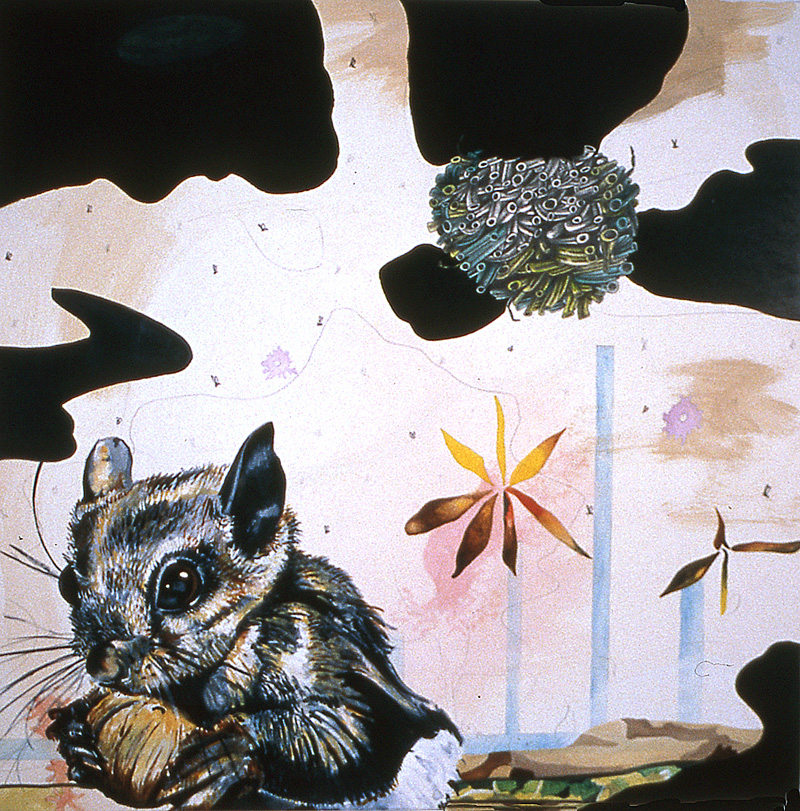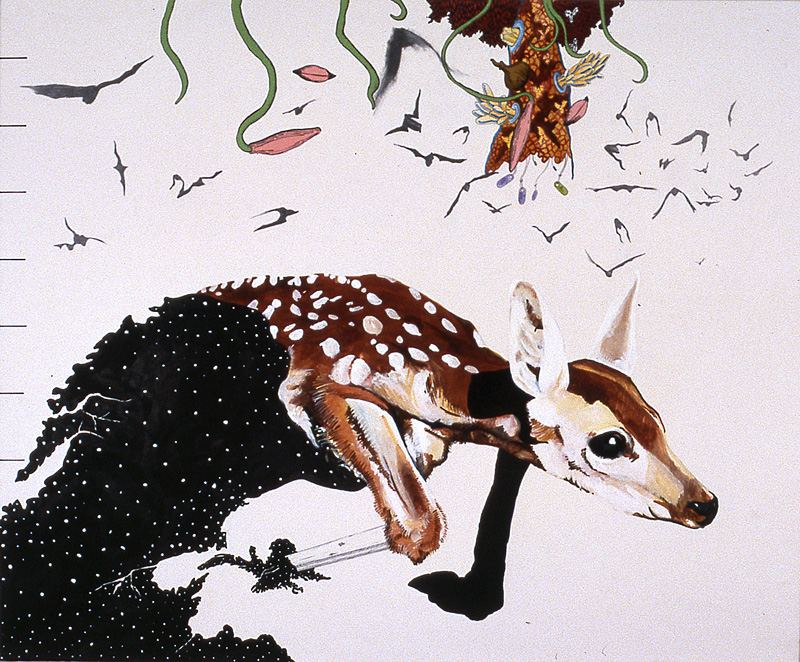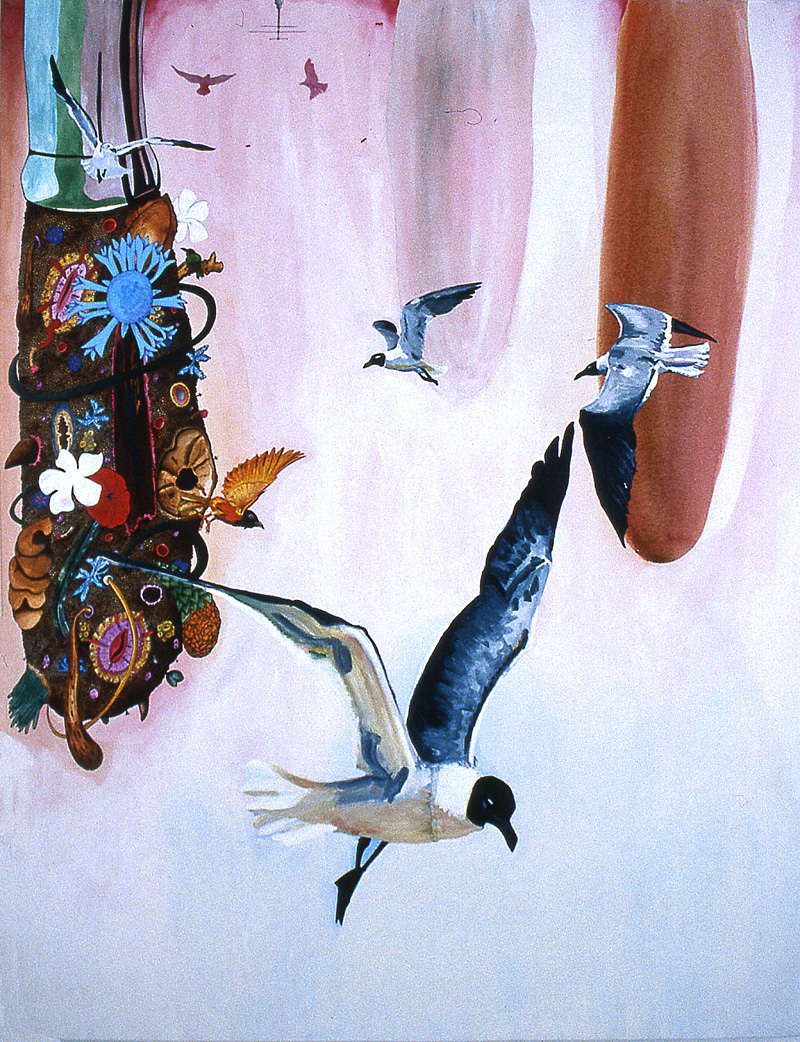(Hyper)Natural History (2002 – 2009)
I consider the paintings in this body of work to be natural history art, but they fall outside the traditional bounds of the genre. They celebrate particular animal species (and sometimes landscapes) and draw inspiration from outdoor experiences as well as contemporary research, but the pictures are also mystical in inclination. Mystics survey and respond to the same earthly, material realm that the rest of us do, but they locate the extraordinary in the mundane. They reawaken their capacity for reflective wonder and, in so doing, experience a kind of rebirth into a vaster dimension of experience. I believe that scientists are essentially doing the same thing — inspiring awe and wonder — albeit using a very different toolkit.
But not all scientists will agree. The late evolutionary biologist Stephen Jay Gould called the realms of science and religion “nonoverlapping magisteria,” arguing that there is no convergence of the two because science trades in facts to explain material phenomena, whereas religion traffics in the unverifiable and the unobservable. I think Gould’s model is useful, but I believe that the two magisteria are separated not by a great wall, as so many insist, but by a permeable membrane. At points of contact, then, there is a bleeding of one realm into the other. These paintings are the observations of a naturalist working at this intersection.

















